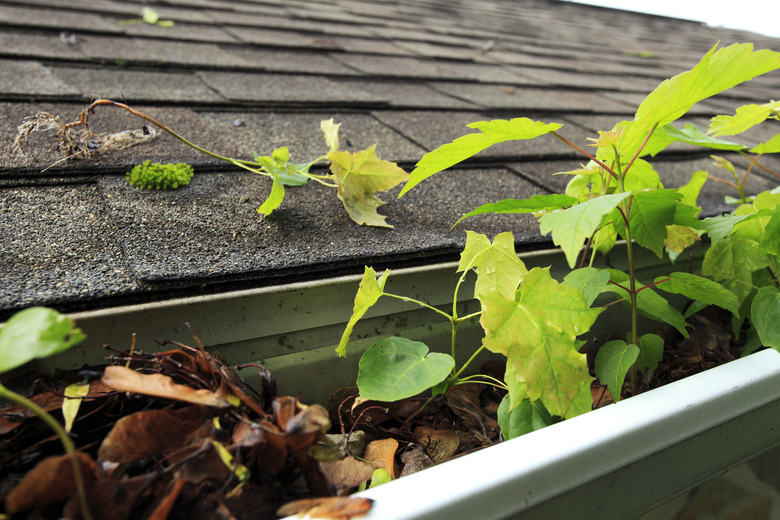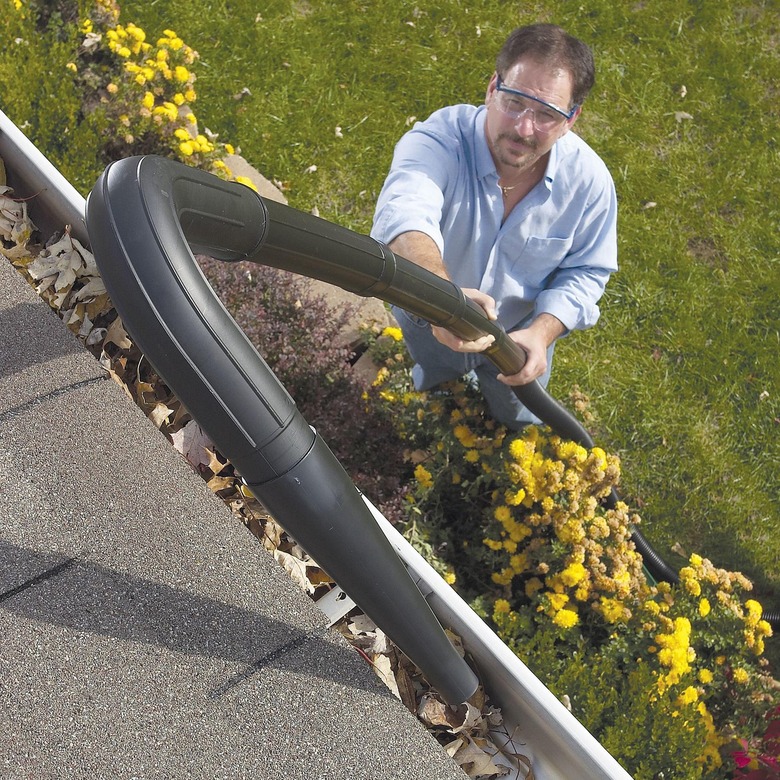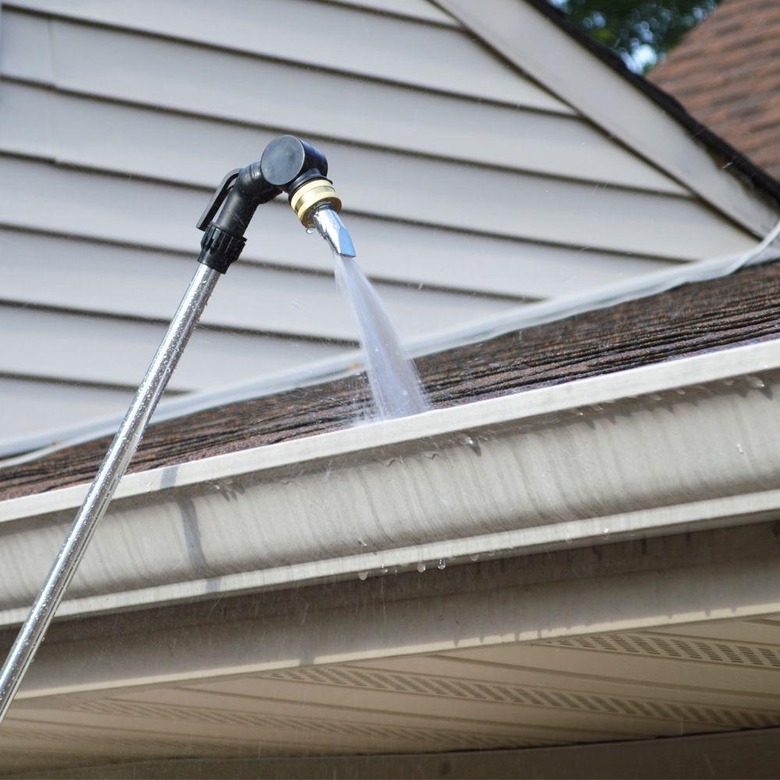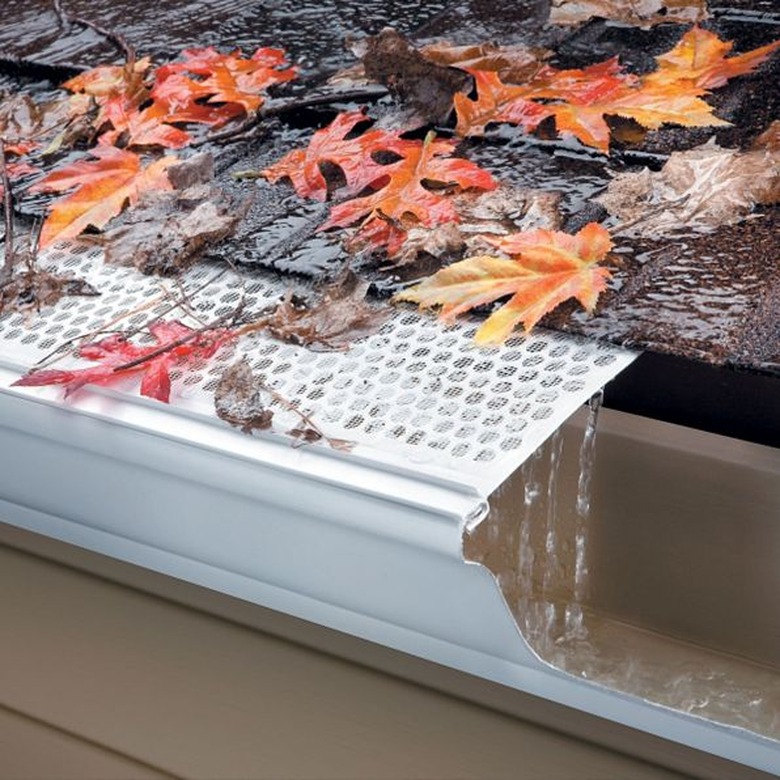How To Clean Gutters And Downspouts
Rain gutters and downspouts comprise one of the simplest and most reliable household systems. They work solely by the force of gravity and almost never wear out. When they do fail, it's for the same reason, probably 99 percent of the time: we fail to clean them. The only systematic failure they suffer from, apart from outright damage, is improper sloping—that is, when the gutter sags and doesn't slope down toward the downspout. Therefore, the best way to keep your gutters doing their job is to get up there and clean them, at least a few times a year. Even if you install screens or other devices to keep debris out of your gutters, you need to inspect them regularly to make sure there's no blockage.
Gutter Cleaning Safety
Gutter Cleaning Safety
Homeowners really do fall off of their roofs. So unless you're willing to restrain yourself with fall-protection gear anchored to your rooftop, don't clean your gutters from the roof itself. You may be the type who's comfortable walking on a pitched roof, but crouching down at the edge of a roof and reaching below the edge pits your body weight against you. It's just too easy to get slightly off balance, with nowhere to go but down. Instead, clean gutters by reaching upward while standing on a secure ladder.
For a single-story home, the best type of ladder for cleaning gutters is a tall stepladder. This gives you the best range of motion without compromising stability, and it's generally easier to move than an extension ladder. For a multi-story home, you'll need an extension ladder. In this case, make sure the ladder feet are on solid, level ground (or use a block to level the feet) and the ladder tilts toward the house at a 75-degree angle (15 degrees from vertical).
Always wear heavy work gloves to clean gutters. There are lots of sharp metal edges and viciously pointy sheet metal screws that hide behind all the gunk. If you're doing any spraying with a hose, especially overhead with a gutter cleaning wand, you might want to wear safety glasses.
How to Clean Gutters
How to Clean Gutters
The number-one tip for cleaning gutters is to do it often—and before the next big storm. The standard recommended schedule for cleaning is twice a year, but if you have big trees near your roof, you'll probably need to check the gutters a lot more often—at least a few times during fall and every couple of months the rest of the year.
To clean your gutters, put on your work gloves and grab a 5-gallon bucket with a handle. If desired, you can use a small garden trowel or even a toilet brush to help scoop gunk out of the gutters, but usually, your hands work just as well or better. Start cleaning at one of the downspouts and work toward the other end of the gutter. Most clogs are worst near the downspout opening, and if there's any standing water in the gutter, clearing the downspout entrance will allow the water to drain out while you work.
Drop the handfuls of debris into the bucket. If desired, you can hang the bucket from a hook on your ladder so you don't have to hold it. When the bucket gets full or heavy, carry it down to the ground and dump it into a garbage bag or onto a compost pile (decaying leaves and muck make for good compost).
Once the debris is cleared out, you can take the cleaning to another level by spraying out the gutters with a garden hose and a spray nozzle. In this case, start at the high end of the gutter and spray toward the end with the downspout opening. Spraying isn't necessary in most cases, but it's a good idea if the gutters are muddy or have a significant buildup of mineral granules that have washed off the roof shingles.
Tips for Clearing Downspouts
Tips for Clearing Downspouts
If your gutters are particularly dirty or you suspect there's a clog inside a downspout, flush it out with a garden hose. Feed the end of the hose up into the bottom end of the downspout, then turn on the hose full-blast. Be careful not damage the hose on any sharp sheet metal screws that might be poking into the downspout interior. Move the hose farther up until the clog is completely cleared. If the clog is really stubborn, you may have to work at it with the hose inserted from the top down, as well as from below.
About those sheet metal screws... For whatever reason, the metal gutter industry has failed to come up with a better system than driving screws directly into the flow path of downspouts, where they're prone to catching leaves and debris and effectively shrink the capacity of the spout. It's very poor design, but that's how it's done. What's even more problematic is when gutter installers use long screws for downspout joints. Ideally, these screws should be no more than 1/2 inch long, but you might find 3/4-inch or even 1-inch screws; if you do, replace them with shorter screws to reduce the chances of blockage.
Gutter Cleaning Aids
Gutter Cleaning Aids
The simple but universal fact that people hate to clean gutters has inspired many inventions aimed at making the dreaded task easier and less hands-on. Many are designed to allow cleaning from the ground.
- Gutter wands are long (often telescoping) tubes with a candy-cane hook at one end. You attach the wand to your garden hose and spray out the gutters from the ground. The wand usually includes a high-pressure spray tip, and many models have adjustable sprayers to direct the spray where you want it.
- Various pole-type cleaners are similar to wands (without the water) but have a special head that can sweep, scoop or brush out the gutter; some even grab debris with a jaw-like device.
- Shop-vac cleaners are long hoses with hook ends that attach to a shop vacuum, allowing you to suck out gutter debris from the ground.
- Hand scoops are specially shaped plastic scoops that make it easier to clean gutters the old-fashioned way—from a ladder. (If you search online, you'll find DIY versions of these scoops made from plastic containers.)
- Gutter cleaning robots tunnel their little tank-like bodies back and forth along a gutter, whipping out leaves with a rotating flapper-brush head. Sounds dreamy, but you still have to get up a ladder to place the robot in the gutter, and it can't turn corners, so you have to move the robot for every straight run around the house.
Gutter Screens and Covers
Gutter Screens and Covers
In addition to specialized gutter cleaning tools, there's also a host of products intended to keep your gutters from getting dirty in the first place. They come in many forms—flexible screens, rigid grilles, spiky brushes—but all are designed to keep leaves and twigs out of the gutter. The manufacturers' videos and photos show how leaves simply wash over the top of the screen, leaving it wide open for water to flow through. In reality, some leaves wash over, and some do not. And small debris still gets through, so the gutters ultimately need to be cleaned, if less often than might be necessary without the screens.
If you're considering a gutter screen, carefully compare prices (they can be expensive) and customer reviews. Also, consider how easy it is to install the system and what it takes to remove the screens for the inevitable gutter cleanings that will still be necessary.





